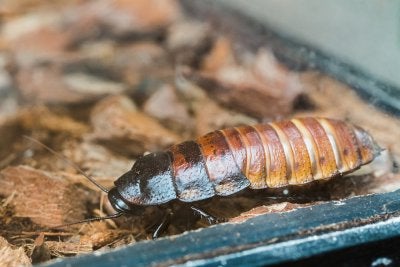-
How to Create an Effective Pest Control Strategy
Have you noticed strange noises, unpleasant odors, damaged furniture, or droppings around your home? If so, then you may have a pest problem on your hands. If you want to minimize the damage to your property and prevent the problem from growing, then itâs important to take action at the first signs of a bug infestation. Keep reading for tips on creating an effective strategy for pest control near Pleasanton .

Find out what youâre dealing with.
Properly dealing with a pest that has infiltrated your home requires that you learn what type of bug it is. For this reason, the first step to take when it comes to creating an effective pest control strategy is pest identification. There are a number of ways of doing this, such as laying traps, finding tracks, looking for dead bugs, visually recognizing the pest, and examining droppings. Because your exterminator should be able to identify the insect after an assessment, there is no need to worry if youâre unsure what type of pest you have.
Determine the right solution for your pest problem.
A worthwhile pest control strategy involves eliminating the pest from the home and taking steps to prevent recurring infestations. Once you know which pest has invaded your home, itâs time to find an insect control strategy that will be effective against it. Some examples of pest control approaches that your exterminator may suggest are laying traps, sealing off points of entry, physical removal, lawn and perimeter treatments, or a combination of these options.
Think about the needs of your family and property.
The final consideration when it comes to developing a pest control strategy is to think about your specific needs. For this reason, your exterminator will assess your situation and speak with you about your pest control options. Some of the factors that your exterminator may consider are whether you have kids or pets, if you have landscaping or a garden that you want to protect, and your concerns about safety and long-term success. Following these steps, you and your exterminator can develop an effective pest control strategy.
-
See How One Couple Dealt with Brown Widow Spiders
Spiders are an important part of the ecosystem, but infestations of these arachnids can pose a danger to people. If youâre dealing with a spider problem and wonder if you need pest control services in Pleasanton , then watch this video to learn about one familyâs experience with a brown widow infestation.
A couple in rural Florida was fighting a losing battle against brown widow spiders that had infested their yard. After several failed DIY attempts at exterminating the pests, the family gave in and contacted a professional pest control company. The pest treatment kept the spiders at bay for a few days, until the homeowners realized that the spiders were around their windows. After replacing their homeâs windows with new, tight window frames and scheduling several lawn spraying pest treatments, the brown widow spiders were finally under control.
-
Dealing with the Effects of Dutch Elm Disease
Are you looking for pest control or tree disease treatment in Dublin because the trees on your property look less than healthy? If so, one potential problem to consider is Dutch elm disease, which affects many elm species.
If your trees are affected by Dutch elm disease, you will notice that leaves wilt, turn yellow, and then become brown. When the fungus enters through the root system, the symptoms may manifest lower in the crown and spread rapidly. When the infection starts in the upper crown, then the symptoms will start at the end of a branch and spread downward.
Although this fungus can spread through connected root systems, itâs closely linked with elm bark beetles. If these beetles lay their eggs in an infected tree, the young hatch and pick up the fungal spores. After reaching adulthood, the beetles can then visit healthy trees and infect them with Dutch elm disease.
Practicing insect control and pest treatment to limit the population of insects that can transmit the fungus is one of the best ways to deal this disease. Breaking root grafts between neighboring trees and treating trees with fungicides can also help manage the effects of Dutch elm disease.

-
Busting Common Myths About Roaches
A need for cockroach extermination is one of the primary reasons why people contact a pest control company. If youâre looking for ways to prevent a cockroach infestation in Dublin, then you may benefit from understanding more about these household pests. Continue reading to learn the truth about common myths regarding roaches.

Myth #1: All roaches are pests.
You may be unpleasantly surprised to learn that there are about 4,000 different cockroach species worldwide. Some of these bugs can fly and others canât, and some of them are black or dark brown in color, while others have light brown or reddish coloring. You may be glad to learn, however, that a relatively small number of cockroach species invade buildings and homes where they can pose a danger to human health. If you have spotted cockroaches in your home, then contacting a pest control company sooner rather than later can help prevent the problem from growing.
Myth #2: Roaches are invulnerable to nuclear explosions.
Itâs true that cockroaches are extremely tough insects and that there has been research concerning their ability to withstand radiation. Whatâs been found is that roaches that are exposed to 1,000 radon units live and experience decreased reproductive ability, and about 10% survive exposure to 10,000 radon units. Comparatively, humans die after exposure to about 400 to 1,000 radon units. However, cockroaches die after about an hour of being exposed to 115ºF temperatures, so they are unlikely to survive a nuclear explosion, in which temperatures reach more than 100,000,000 ºF.
Myth #3: A cockroach can live for months without a head.
Roaches have different circulatory systems than humans. Instead of capillaries and blood vessels, they have open circulatory systems that allow the body to seal off an injured area more easily. Also, cockroaches breathe through little holes, call spiracles, that are in each segment of their bodies, and their brains do not control their breathing. While these facts suggest that cockroaches can live for a while without a head, the inability to eat food or drink water will cause the average headless cockroach to die within a few weeks.
RECENT POSTS
categories
- Uncategorized
- Weed Control
- Lawn Treatment
- Pest Control
- Performance Pest Management
- infographic
- Spider treatment
- Pest Management
- Commercial Pest Exterminator
- Residential Pest Exterminator
- Mice
- Tree Diseases
- tree disease treatment
- cockroaches
- Flea
- Fleas
- Ants
- Ant Infestation
- Bed Bugs
- Wasps
- Bees
- Stinging Insects
- Household Spiders
- Insects
- Tractor Mowing
- Earwigs
- Northern California
- Commercial Property
- Sow bugs
- Infestation
- Bugs Live
- DIY Pest Control
- Spider Silk
